If you plan to work on a chicken recipe for any delicacy, either gravy, soup, or stew, then you know how important it is to have chicken broth ready before beginning the whole process. Chicken broth, also known as chicken stock, is an essential liquid made by simmering chicken bones, herbs, and some select spices in water.
It is an important ingredient in many culinary preparations of chicken, thus adding depth and richness to a wide variety of dishes. The chicken broth recipe involves extracting the essence of chicken and other ingredients through slow cooking, resulting in a form of flavorful and nutritious liquid.
In this article, we will explain you step-by-step through the chicken broth recipe so that your next chicken delicacy tastes absolutely tasty and well-cooked.
Everything You Must Have in Advance for Preparing Your Chicken Broth
It is important to have the prerequisites sorted before starting a recipe. This ensures smoothness throughout the process, and the broth will be ready on time! This process is also essential as you can add a few ingredients as per your liking.
You cannot customize the whole broth yourself, but you have the freedom to choose a few of the spices of your liking, which can help change the overall taste of your chicken dish.
Essential Ingredients
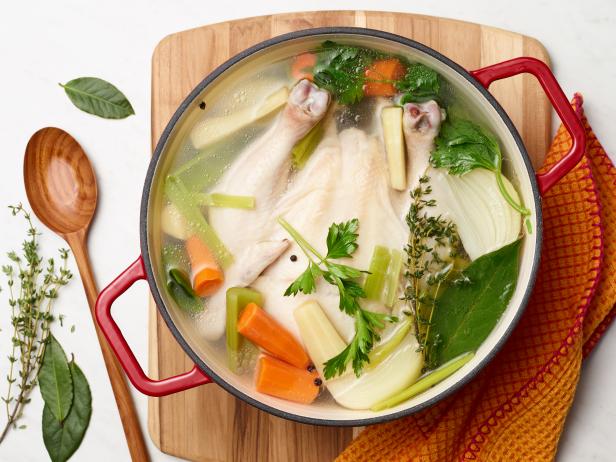
Items Required | Quantity |
Chicken Bones | 2-3 Pounds |
Vegetables: Carrots Celery Stalks Onion | 2 nos 2 nos 1 piece |
Herbs and Spices: Fresh thyme Parley stems Bay leaves Black peppercorns | 4-5 sprigs 2-3 2 1 teaspoon |
Water | 8 cups |
Tools Required

Fine mesh sieve or cheesecloth | |
Step-By-Step Guide to Prepare Your Chicken Broth Recipe
Now that you have everything required before starting with the chicken broth recipe. Let us now look at the steps required in the recipe for chicken broth.
Step 1: Begin with the Preparation
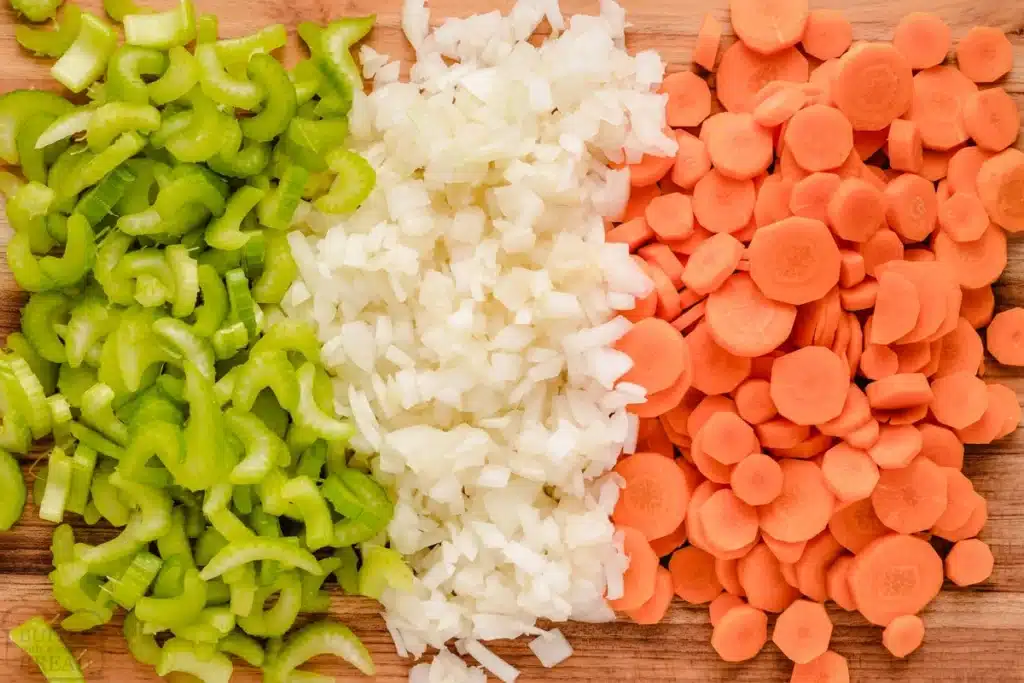
The first and very important step is to collect all the vegetables, tools, and ingredients and thoroughly wash them. This step is essential for hygiene and health purposes.
Once you wash the carrots, celery, and onions, chop them into large pieces and keep them aside for later. Peel and crush the garlic cloves in this step only so you can add them later.
Step 2: Loading the Pot
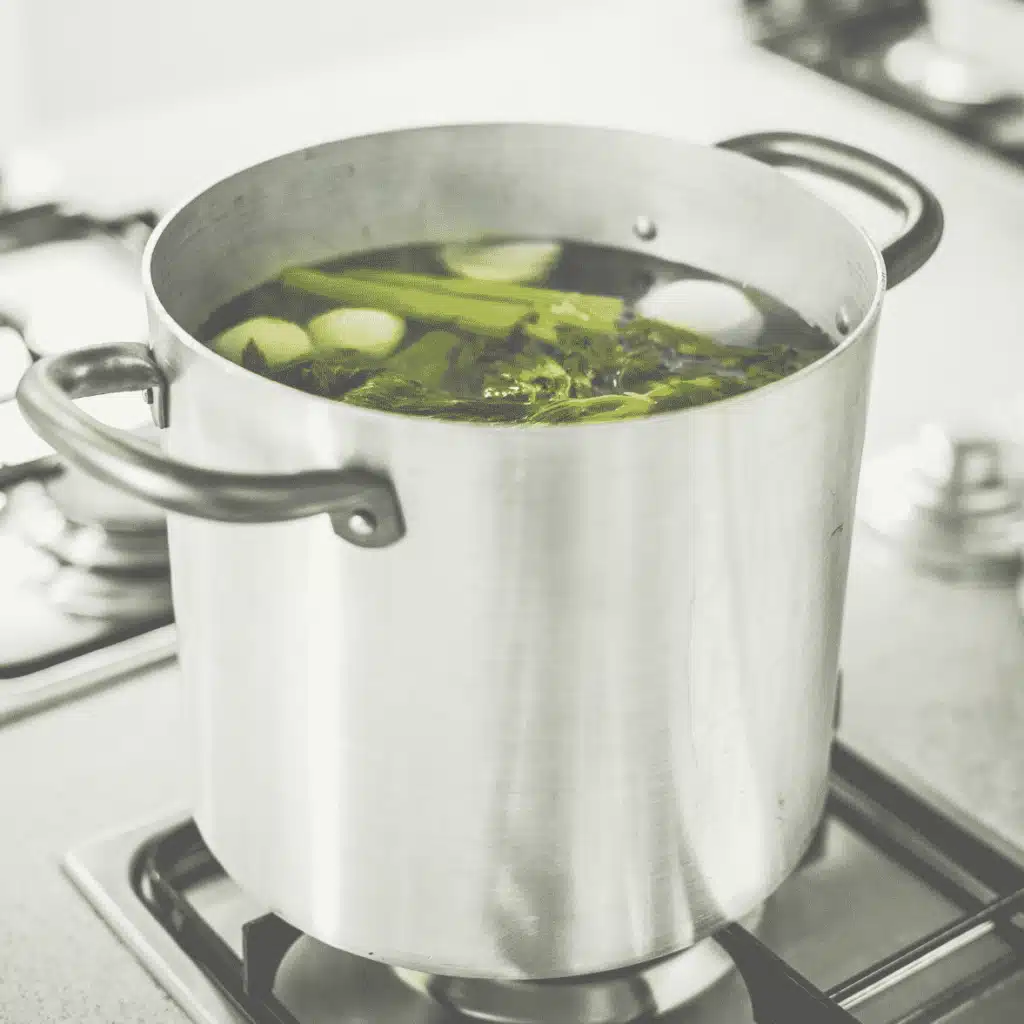
Once you are done with everything in Step 1, it is time to load the pot with the ingredients. Place the chicken bones in the pot. Arrange the chicken bones, which can be leftover roasted chicken, chicken wings, or any other chicken item you might have had. Then, add the chopped vegetables and crushed garlic to the pot on top of the chicken bones.
Step 3: Add Water and Cook
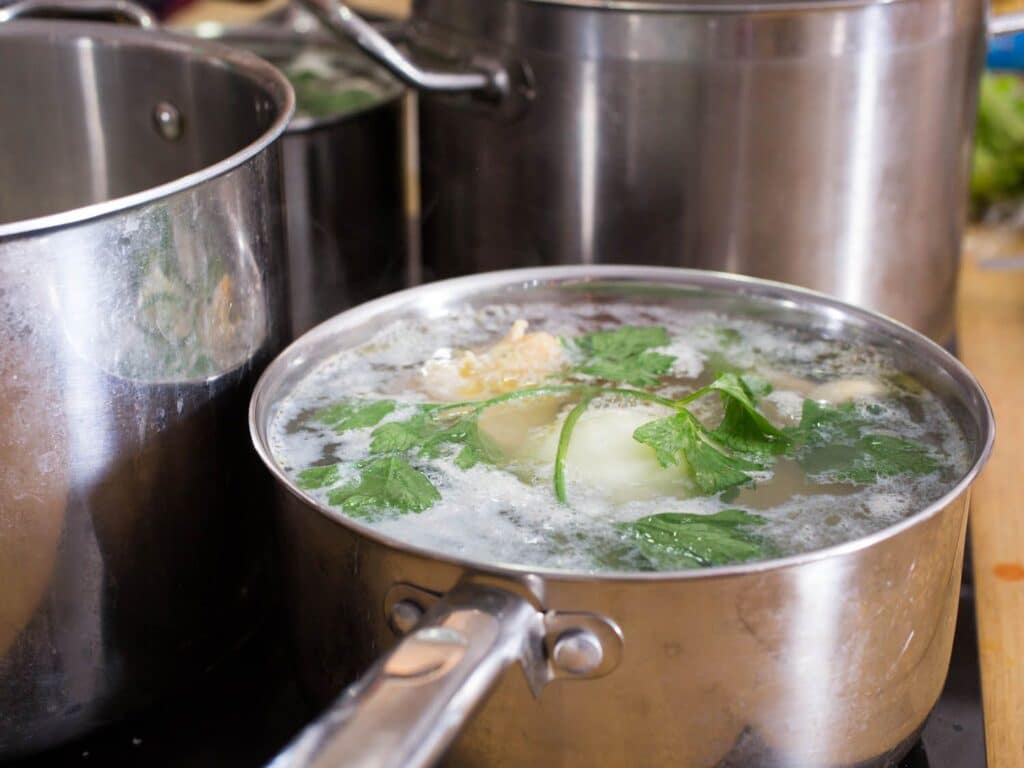
Once you have added all the ingredients to the pot, add enough water to cover the ingredients completely. The water should be completely above the ingredients, but be careful not to overfill, as the water rises when heated and can cause a spill.
Once you have filled the water, securely lock the pot lid so that no steam can escape during cooking.
Then, you can start heating the pot; cooking for at least 60-90 on the sim is recommended. Longer cooking times will result in a richer chicken broth. Once the cooking time is complete, allow the pot to release pressure naturally for about 15-20 minutes. This will ensure the flavors mix further and smooth transition from high pressure to low pressure.
After 15-20 mins, slowly release another existing steam in the pot by carefully and slowly removing the lid. It is important to be cautious at this stage as the steam will be very hot.
Step 4: Straining

After you are done with completely releasing the steam, use the fine mesh or cheesecloth to carefully strain the freshly prepared broth into a large bowl or container. This process is important as it removes the bones, vegetables, and herbs, leaving clear and flavorful chicken broth behind.
After the successful straining process, discard the solids like chicken bones, vegetables, and herbs. They were only required in the chicken broth recipe to provide flavor.
Allow the chicken broth to cool down before transferring them to airtight containers for storage. This process also helps in preventing bacterial growth.
Step 5: Storage
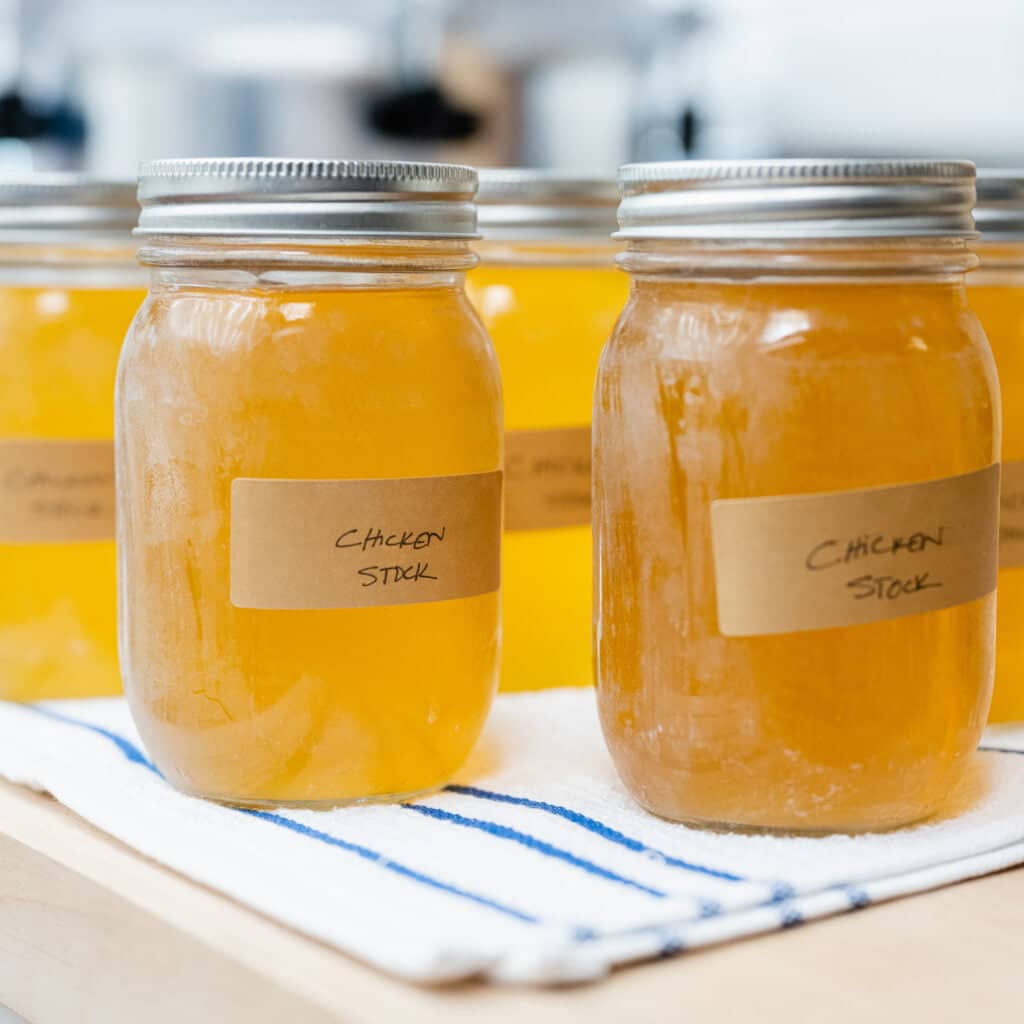
If you plan on freezing the broth, it can be helpful to label the date you made the broth so you have a track of how old it is and whether it should be used or not.
Once these steps are completed, you will have nutritious and delicious homemade chicken broth. The process is fairly straightforward and rewarding, which provides you with a versatile base to enhance the flavors of various dishes in your home.
Important Points to Remember While Preparing the Chicken Broth
- Safety First: It is important to carry out the steps carefully. From chopping the vegetables in the starting steps to straining the hot chicken broth into a container, safety should be ensured throughout the recipe.
- Don’t Overfill: While filling the pot with water, it is important not to overfill it to avoid a mess later. Remember, you only have to fill the pot to submerge all of the ingredients below and not more completely. Water rises during heating and will overflow if the quantity is too much.
- Skim the Foam: While cooking the chicken broth, some foam or impurities may rise to the surface. Skim off this foam with a spoon for a cleaner and clearer chicken broth.
- Cooling and Storage: It is important to allow the chicken broth to cool down before storing it in the refrigerator or freezer. You can store the chicken broth in an airtight container for up to 4 days in the refrigerator or a few months in the freezer.
Benefits of Having Chicken Broth

Chicken broth is not only a flavorful and versatile culinary foundation, but it also offers several health benefits. Chicken broth provides a range of nutrients and compounds that support overall well-being. Let us now look into the benefits of chicken broth, highlighting its nutritional content and potential impacts on the body.
- Rich in Nutrients: Chicken Broth is a concentrated source of essential nutrients released during the process of making it. It contains vitamins and minerals such as calcium, magnesium, phosphorus, and potassium, which play important roles in bone health, nerve function, and a healthy cardiovascular system. Additionally, chicken broth provides several B vitamins, including niacin, thiamin, etc. These are important for energy production and the proper functioning of the nervous system.
- Supports Gut Health: Chicken broth is gentle on the digestive system and can be particularly beneficial for individuals with digestive system issues or those recovering from an illness. The gelatin and collagen released from the chicken bones during cooking can help in repairing the lining of the digestive tract, reducing inflammation and promoting gut health. The broth’s easily digestible nutrients also aid in nourishing the body.
- Boosts Immune Function: Chicken broth is traditionally regarded as a healing remedy for common colds and respiratory infections. The broth’s amino acids, vitamins, and minerals can support the immune system and potentially help reduce the severity of various illnesses. Also, steaming the chicken broth can help clear congestion and soothe irritated throats.
- Promotes Hydration: As a liquid-based preparation, chicken broth can contribute to daily hydration, essential for various body functions. Staying well-hydrated supports healthy kidney function aids in digestion, and helps to keep a regulated body temperature.
- Aids Joint Health: The collagen found in chicken broth supports joint health and may alleviate joint pain and inflammation associated with similar issues. Collagen acts as a cushion in joints and helps maintain their structural integrity. Regular consumption of chicken broth may contribute to joint flexibility and overall mobility.
- Supports Skin Health: The collagen and gelatin present in chicken broth can benefit the skin by promoting elasticity and hydration. These compounds support the body’s natural collagen production, contributing to smoother and more supple skin. Additionally, the vitamins and minerals in the broth, such as vitamin C and zinc, can aid in skin repair and maintenance.
Calorie Count
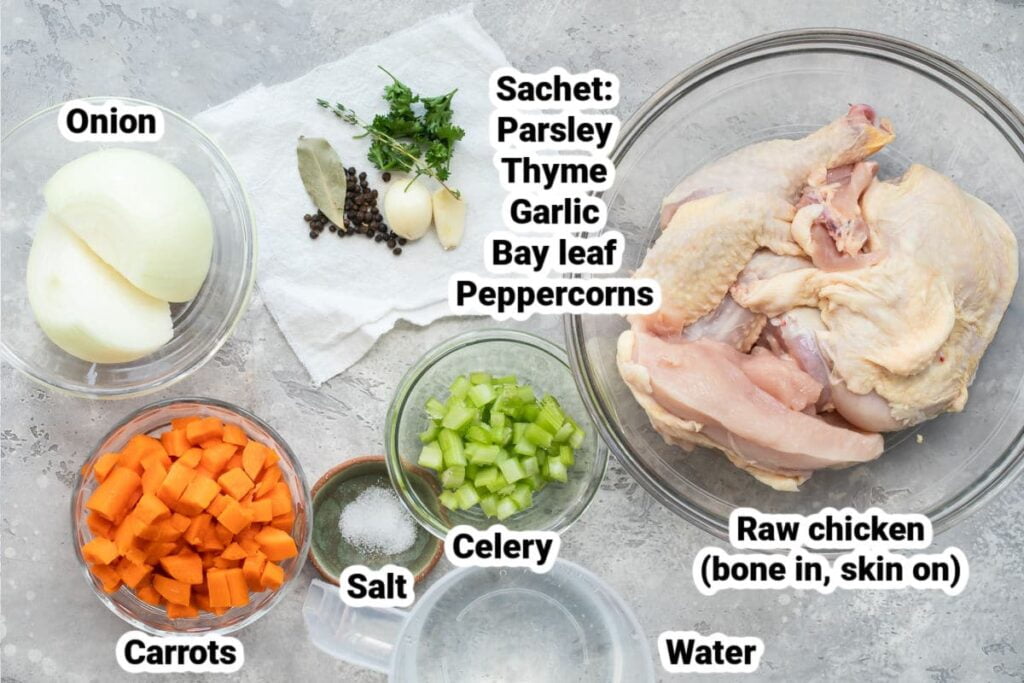
Homemade Chicken Broth is approximately 30 to 40 calories per cup. It’s important to note that the calorie count may vary slightly based on the specific ingredients used, the ratio of bones to vegetables, and the cooking time.
Store-bought or commercially prepared chicken broth may have slightly different calorie counts, so it’s always a good idea to check the nutrition label on the packaging for accurate information.
Conclusion
There it is, your chicken broth recipe and the benefits of consuming chicken broth. Even though the recipe process is fairly easy, you might face some issues during the first attempt. However, after only one try, you will be good to go to make chicken broth alone without any help.
Chicken broth is a versatile and nourishing culinary ingredient that serves as a flavorful base for countless chicken dishes, making it an essential component in any home recipe.
It enhances the taste and nutritional value of a wide range of chicken dishes. We have also mentioned various benefits of consuming chicken broth and how it can assist your body in daily functions and ensure a healthy lifestyle. Start making your broth with our chicken broth recipe now!




